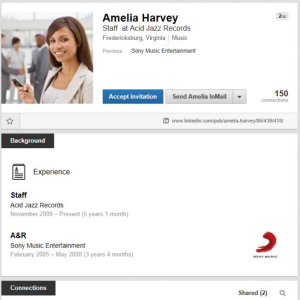Are You Faking It? False Profiles in Social Media
 I’m going to make a slightly embarrassing confession: I like my smile.
I’m going to make a slightly embarrassing confession: I like my smile.
It’s one of the parts of me I don’t really have any complaints about, and I’ll take my moments of self-approval where I can get them. But when a stranger asked me to connect on LinkedIn based on nothing but the appeal of my smile, I had one thought—No way.
Adding to my suspicion? No contacts in common, totally unrelated careers, no shared fields of study or groups of interest and the fact that I’ve never even thought about visiting his homeland of Poland (no offense intended). The clincher? I Googled him and pulled up nothing. Zilch. How is that even possible? I know newborns with Google hits.
So did I accept his “connect” invitation? Does my smile-related vanity extend that far? I’m not telling. But this I will share: Fake profiles on even “professional” social media sites like LinkedIn are a real and growing thing.
While fake profiles can be the stuff of security nightmares, most of us don’t move in these kinds of cloak-and-dagger settings. But profiles of non-existent people can hit any business in its vulnerable spot: The budget. Whether your targeted advertising campaign is diluted by fake profiles, or you’re a recruiter who paid good money only to uncover misleading candidates, the loss is real. And this doesn’t take into account the time costs from attempting to verify accounts or using up InMails contacting false leads, and the company reputation costs incurred from fake “connections.”
The issue has become big enough to generate LinkedIn posts on the topic and various articles in the blogosphere about spotting fakes, but the company’s own help center confines its comments to instructions on how to report suspected false profiles. Even low estimates of a few million fake LinkedIn members have given some high-powered marketers pause, enough so that one has written an open letter to LinkedIn asking for the option of verified accounts.
Here’s an excerpt: “I hate that we have to become detectives before approving folks with profiles that look plausible at first glance. But lacking an automated way to discern real from fake people means that we’re ‘on our own.’ There are hundreds of articles on the Web advising people how to ‘tell fake from real LinkedIn profiles.’ There should be no need for this. We need your help and the place to start is by making it much harder for fake people to get access to your service.”
Have you ever encountered a fake on LinkedIn (or another social media)? Tell us your experience.
Read more about social media marketing and content marketing on LinkedIn.
Emily Smith – Project Manager



